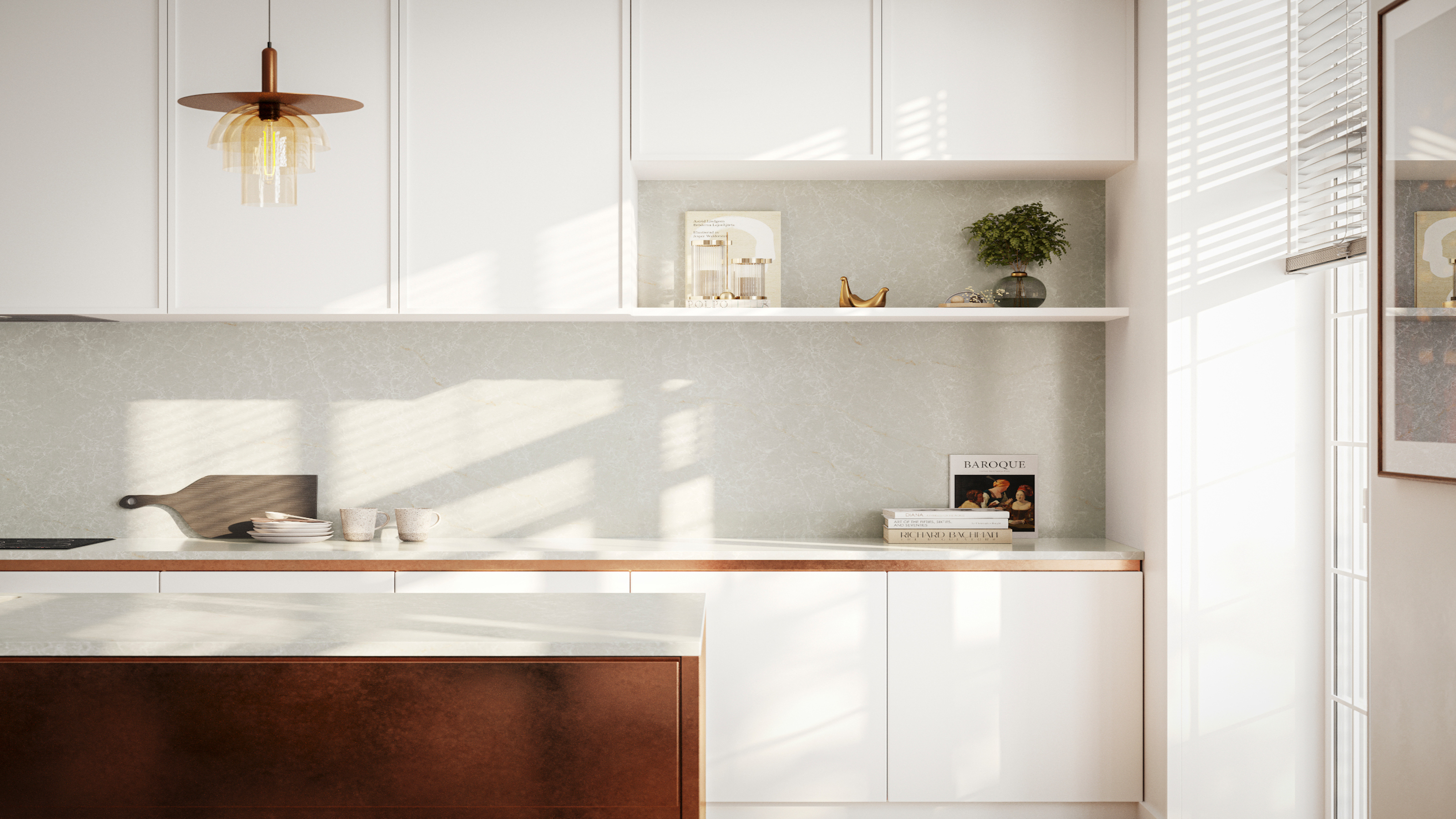
Learning the most common kitchen cabinet design mistakes and installation errors ahead of time will save the painful, time-consuming and often costly fix.
Our design experts reveal the 10 bloopers to avoid, and what to do instead, making this important storage feature in your kitchen from failing to deliver. From cramped cupboards to awkward layouts, these slip-ups can really cramp our style.
Avoid getting wrapped up in the excitement of it all (including learning about outdated kitchen cabinet trends) and swerve design blunders that turn your dream kitchen into a daily headache.
The top 10 kitchen cabinet design mistakes
1. Wrong handles

A common kitchen cabinet design mistake is overlooking the importance of choosing the perfect cupboard handles for you. Selecting the right handles is like adding the cherry on top of a beautifully designed kitchen.
After all, it's the small details that can make a big difference. Every time you reach for a cupboard or drawer, you're interacting with those handles, so they need to not only look good, but feel good in your hands.
Plus, they're like the jewelry of your kitchen, adding that extra bit of flair and personality to the space. From sleek and modern to charmingly rustic, the right handles can tie the whole kitchen together, making it a space you love to be in.
When choosing yours, consider:
- Your budget: start here and fan out.
- The dexterity of your household members: those with grip issues might find a bar easier than a round pull.
- The most comfortable shape: try out a sample if you can before committing to a bulk buy/order.
- Color and style to suit your tastes but also out-last design fads: varying shades of metal will always go down well. Consider coordinating, or contrasting with other metal fixtures such as light switches or appliances.
- Quality: This will be largely dictated by your budget but opt for items highly-rated by customers if buying online, and consider compromising on color/style if it means bolstering your quality as this is a high-traffic area and the hardware will get lots of use. Investing now will save you money in the longer-term and avoid replacements before their time.
2. Overlooking function
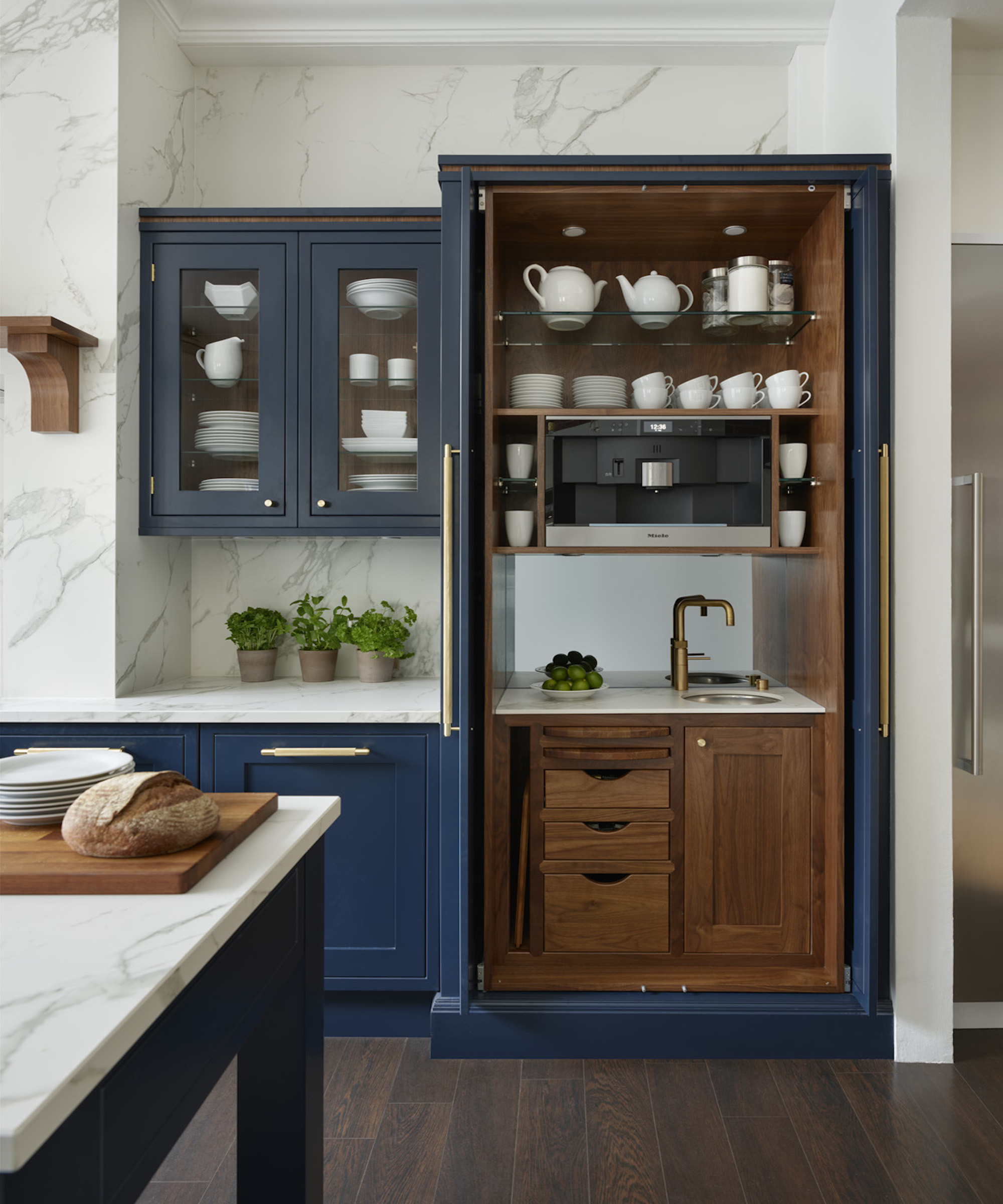
The function of kitchen cabinets is key when designing your kitchen as they will house all your cooking, dining, and hosting essentials so getting this wrong will make your new kitchen less functional.
Cabinets aren't just there for show; they're essential for organization and storage, keeping your kitchen clutter-free and efficient. Learning how to organize your kitchen cabinets will help inform you of what you'll need and like in yours, from the layout of shelves to the accessibility of drawers. Every aspect will impact how smoothly your kitchen operates.
So, when you're dreaming up your kitchen design, think about how those cabinets can work their magic! Smart shelving, clever organizers, and smooth-gliding drawers turn your kitchen into a well-oiled machine, making every cooking adventure a breeze.
Interior designer Nina Lichenstein says, “ Forgetting about specialized storage solutions like pull-out shelves, drawer dividers, or vertical racks can result in cluttered cabinets. Incorporate these features to maximize storage and organisation.”
3. Underestimating space
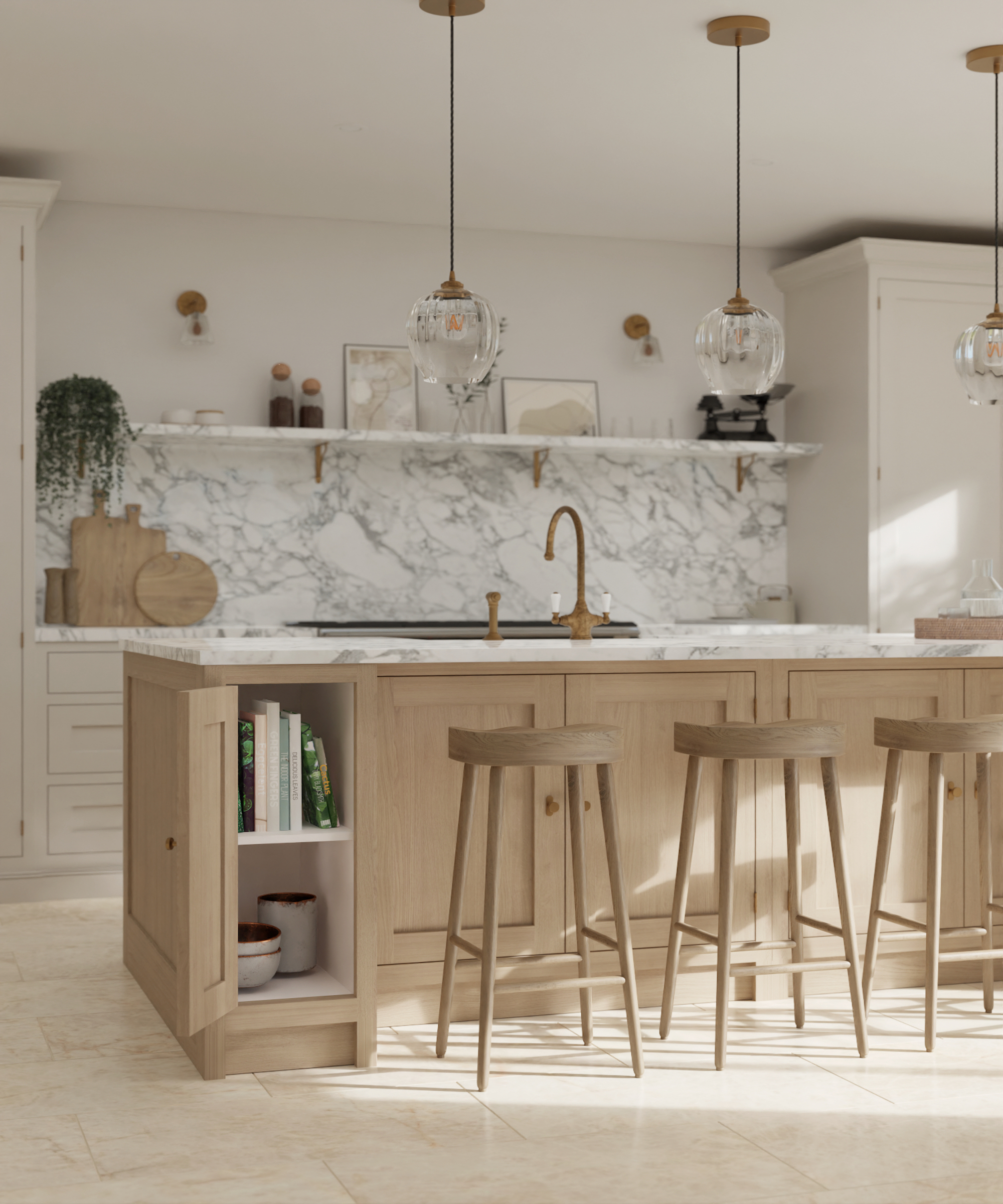
When you're dreaming up your kitchen design, don't skimp on cabinet space — it's a recipe for daily headaches!
Cabinets are the backbone of kitchen storage, holding everything from your favorite pots and pans to those not-so-glamorous canned goods, and when there's not enough space, clutter quickly takes over, making it hard to find what you need and turning meal prep into a chore.
If this is something you're battling right now too, learn how to declutter your kitchen cabinets to give you some extra breathing room whilst awaiting your new kitchen.
Take note of the larger items that need storing and ensure there is ample cupboard space available. Assess the current amount of space used for food, utensils, and crockery, and make sure there is adequate cupboard space allocated for all these items.
By planning ahead in your design and ensuring plenty of storage, you'll keep your kitchen tidy and efficient, leaving your counters clear for whipping up delicious meals and adding those personal decorative touches that truly make it yours, rather than housing all the elements that should be neatly tucked away behind closed doors.
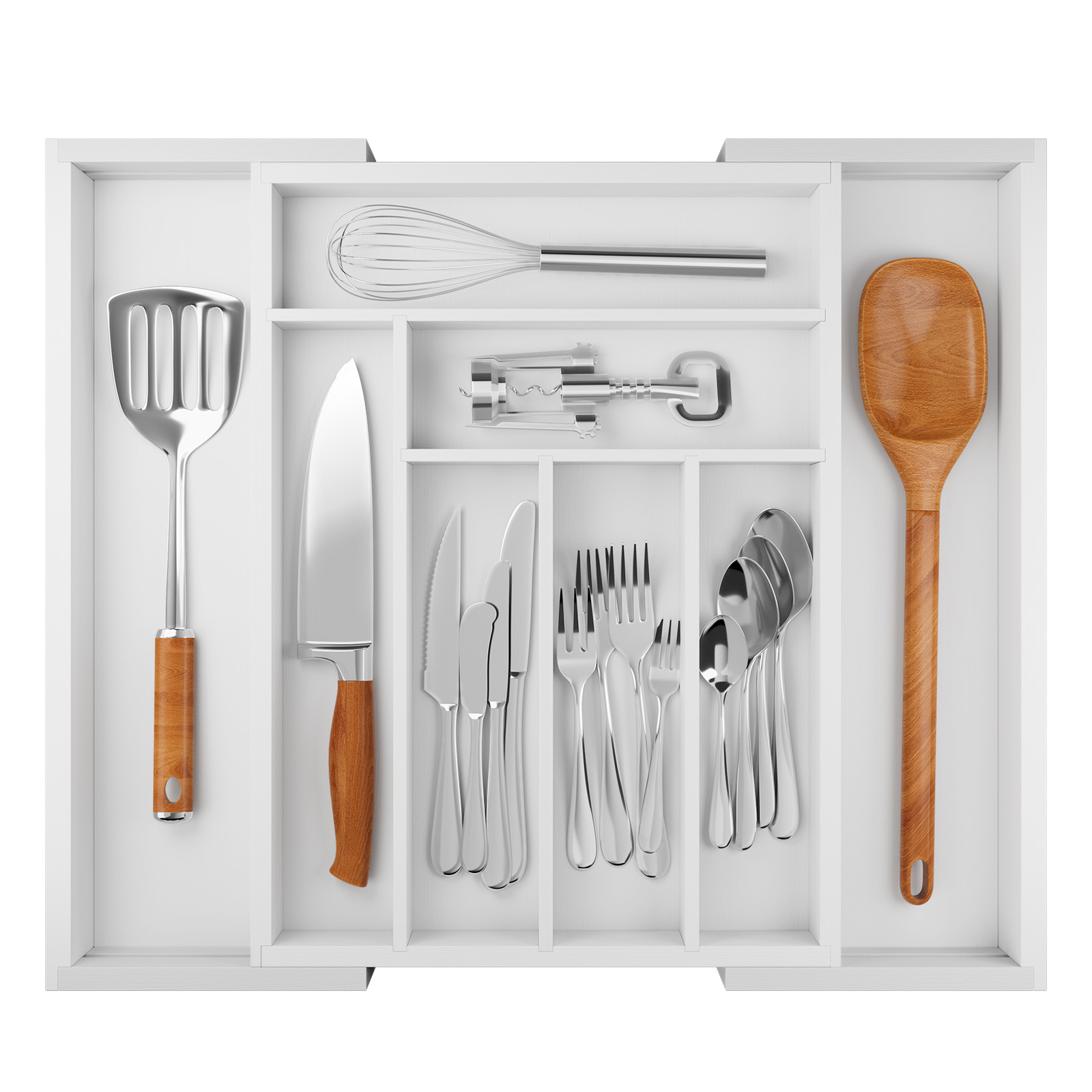
Price: Was $33.99, now $31.99
Size (inches): H1.92 x W12-19.68 x D16.92
This easy-to-clean bamboo drawer divider comes with eight compartments to help keep your utensils organised, and is expandable to help perfect the fit. The tray is made from four-year-old bamboo and hand finished to avoid burs and therefore splinters.
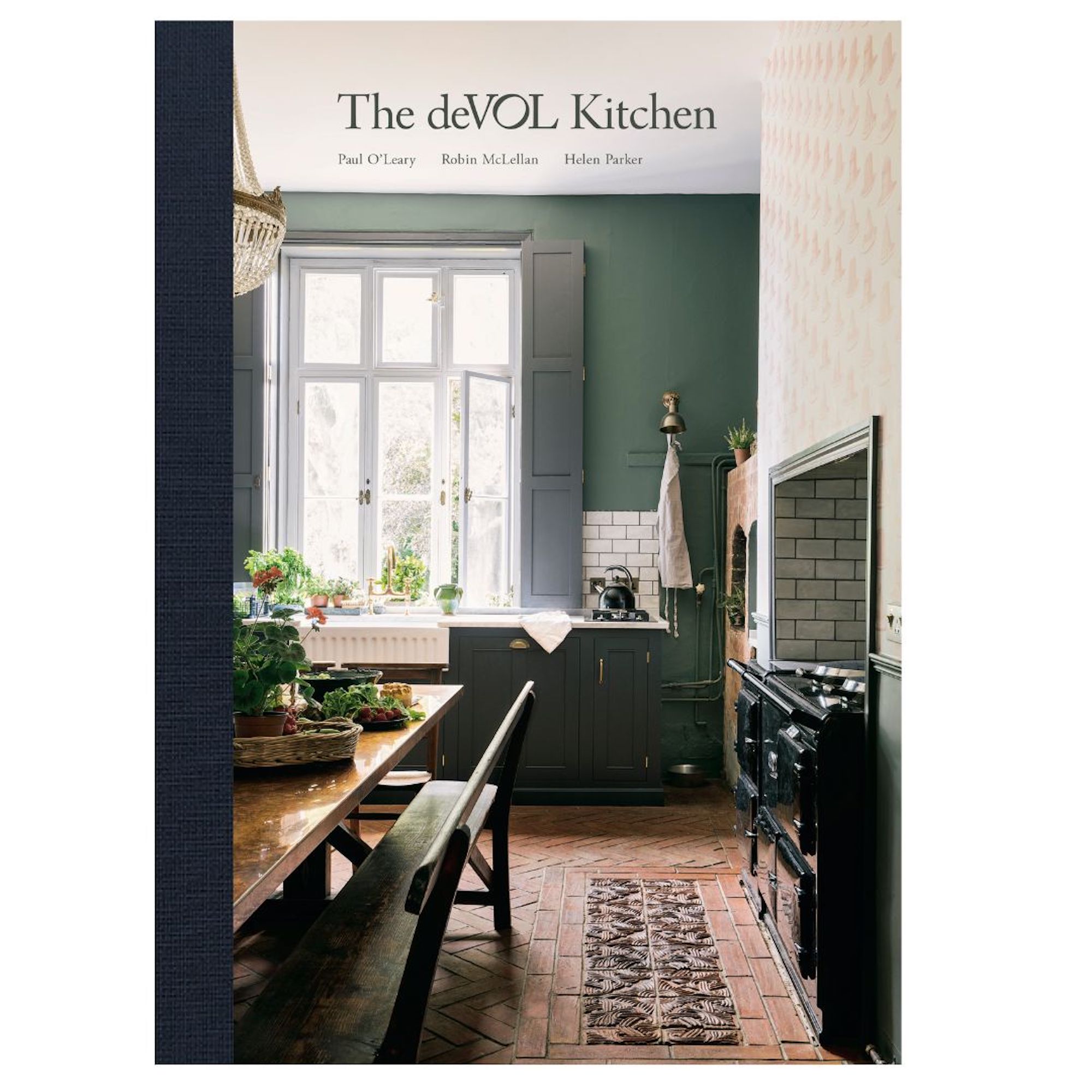
Price: $27.49
Once you're done learning from this five-star rated book on what you need to know about designing and styling your kitchen from renowned kitchen design brand deVOL, style it as decor on your kitchen table, counter, shelf or living room coffee table with a candle and flowers. If you're not into hardcover books or prefer yours portable and better for the planet, this book is available in Kindle edition for $14.99.
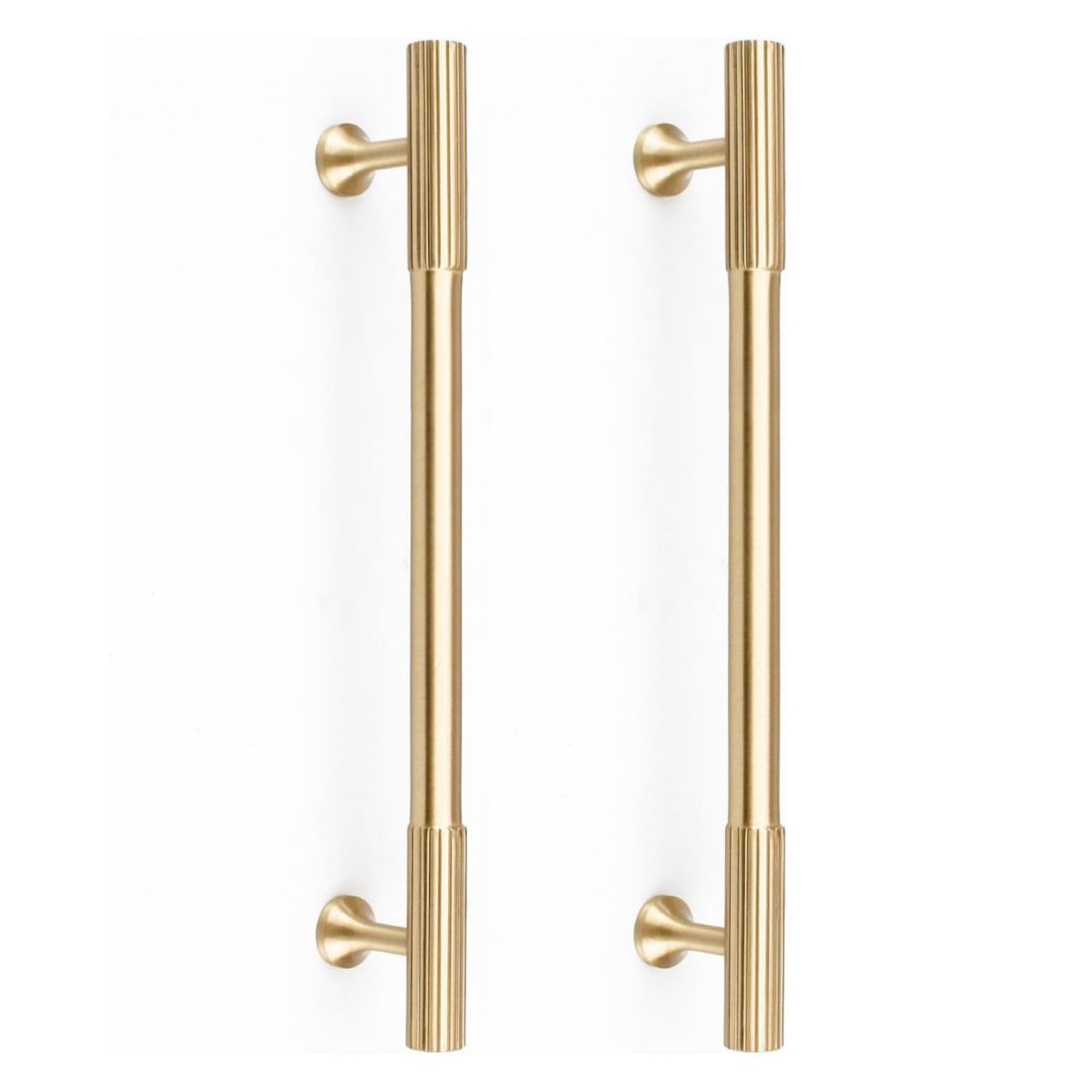
Price: $18.99 for two
Size: from one inch round to 12.35 long
Budget friendly gold-look handles that combine classic design with modern touches? Bingo! We love the conical shape of the hardware attachment section, while the long, sleek lines of these brushed pulls usher in modern design to perfection. Gold will work with every color and never go out of style. If you're installing your cabinet handles yourself, these will be installed easily in minutes and come with the hardware you need. Consider adding cohesion and interests to your kitchen cabinets by picking a mix of round and long pulls from this collection.
4. Misjudging door clearance
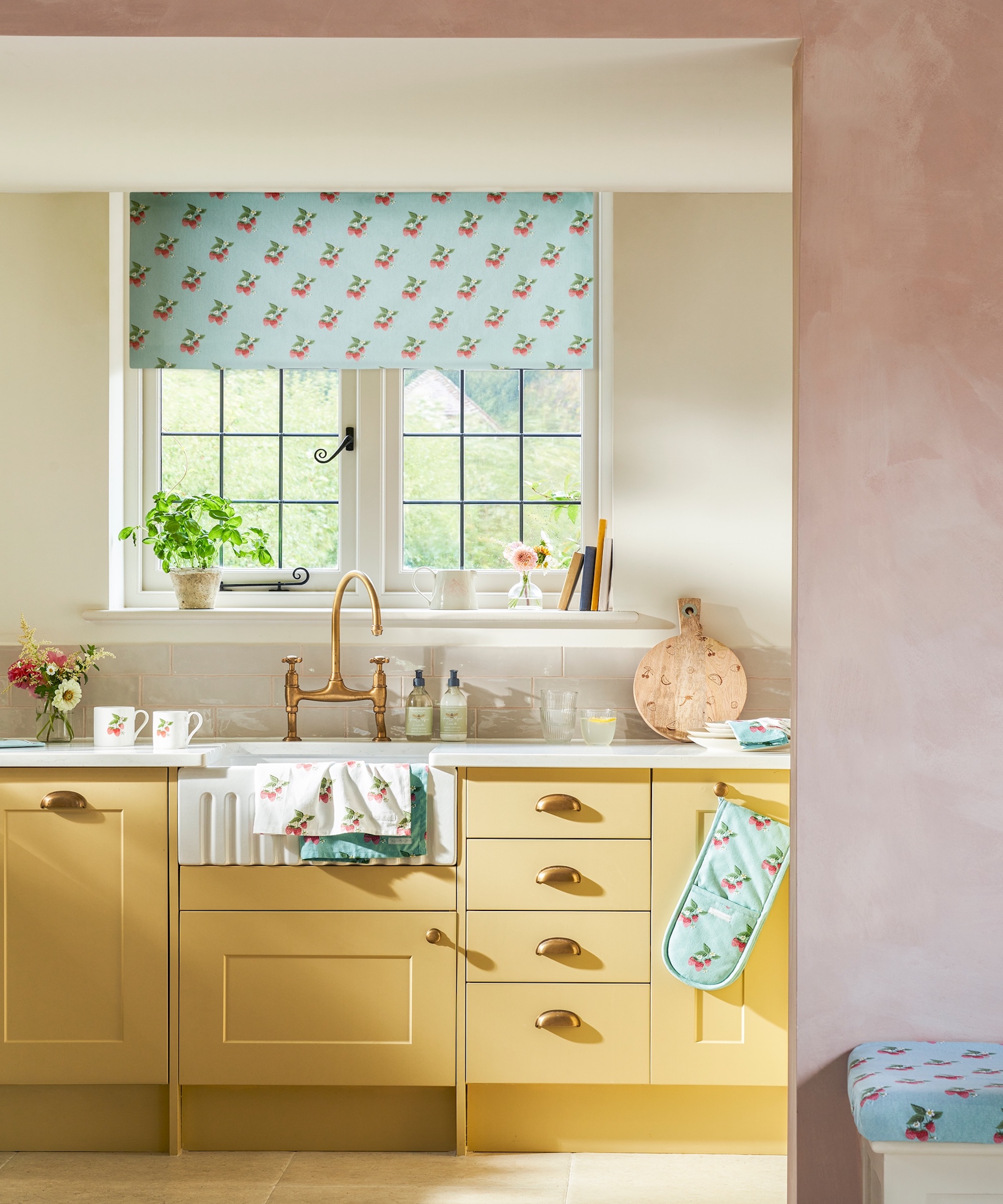
Underestimating door clearance in kitchen design is a common blunder with big repercussions. Limited door clearance can lead to constant jostling and frustration, making simple tasks like opening cabinets or navigating around appliances a hassle.
By avoiding this oversight, you'll create a more functional and user-friendly kitchen environment, where every door swings wide open without any hiccups. Before finalizing your kitchen layout, carefully measure the dimensions of your space, including the locations of doors and cabinets and consider alternative door styles such as sliding or bi-fold doors that require less clearance when opening.
Taking these steps will help you create a well-planned kitchen that maximizes efficiency and minimizes headaches.
Award-winning interior designer, Artem Kropovinsky of Arsight Interiors shares some helpful advice. “To avoid cupboard problems, ensure that there is enough space for the doors and the drawers to open freely, especially near the appliances. Go for the strong hinges and slides to make sure that everything is in line and works perfectly."
5. Not using tight spaces
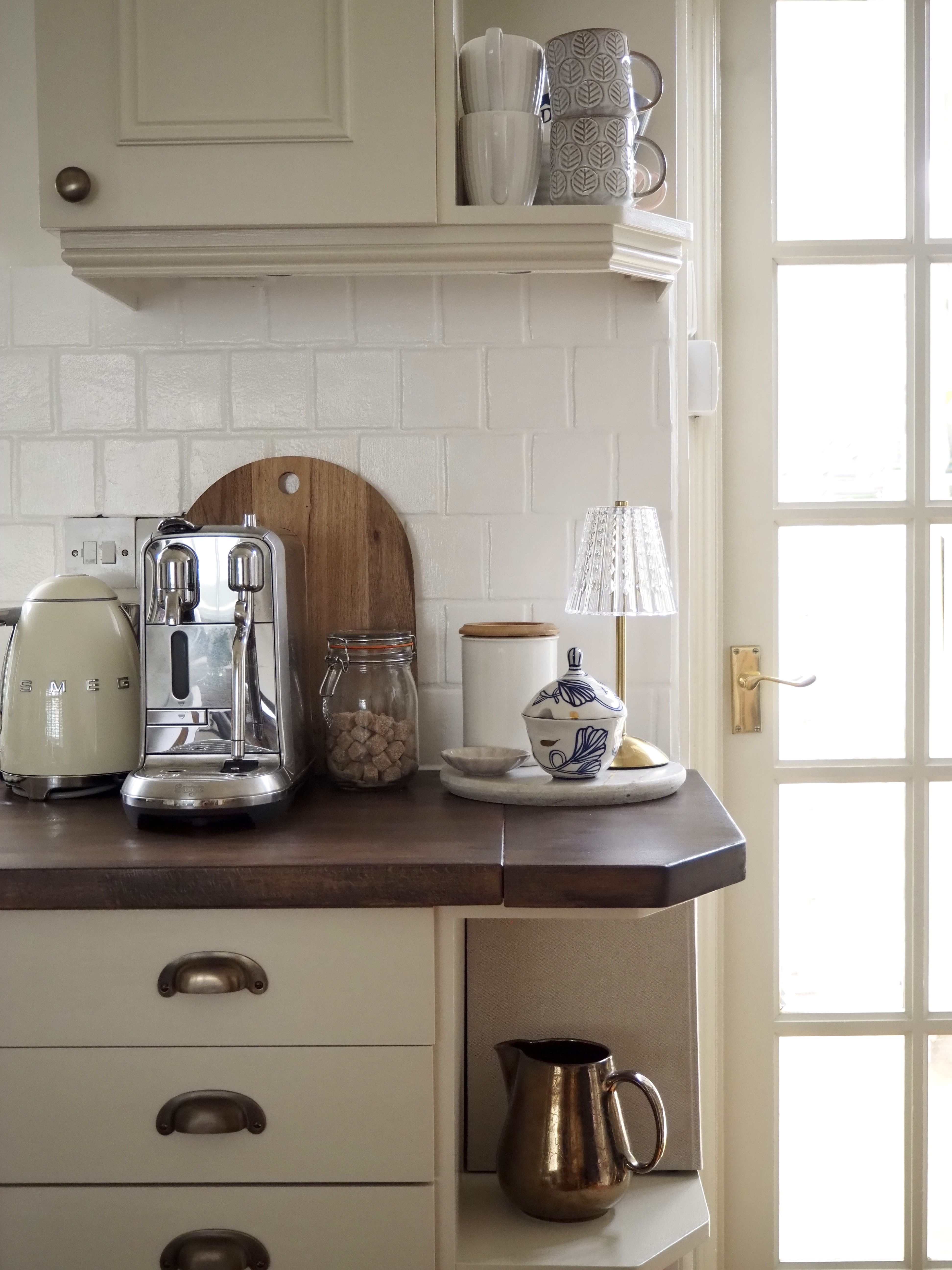
Overlooking awkward corners or dead space in kitchen design is a missed opportunity for maximizing storage.
Those neglected spots could be the perfect hideaway for all your odds and ends, but it takes a bit of creativity and custom cabinetry to unlock their potential. To sidestep this pitfall, take a close look at your kitchen layout ideas and pinpoint any untapped areas that could be put to good use.
This is especially crucial in compact or oddly-shaped kitchens where every inch counts. By making the most of every nook and cranny, you'll transform your kitchen into a highly functional and organised space.
6. Following fad trends
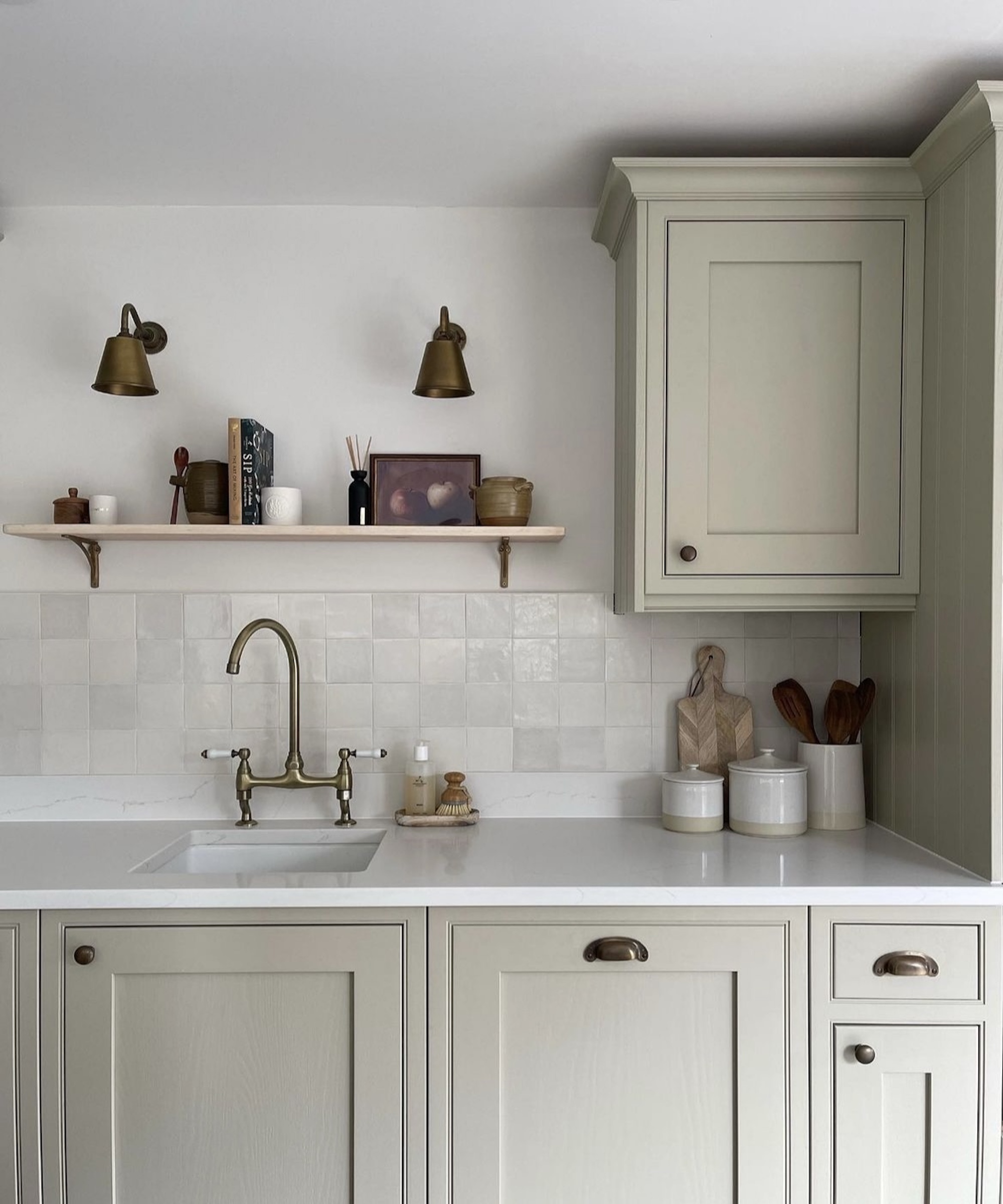
While vibrant hues and ‘of the moment’ might seem like the perfect way to inject personality into your space, they can quickly fall out of fashion, leaving your room feeling outdated in no time.
For those who prefer to play it safe, sticking to timeless colors like classic whites, versatile neutrals, or rich wood tones provide a solid canvas that can evolve with changing design trends and personal tastes over time.
Plus, you can always inject pops of color and personality through easily changeable elements like handles, wall paint, and accessories, giving your kitchen a fresh vibe whenever the mood strikes. By sticking to the basics, you'll craft a kitchen that stands the test of time in style and functionality.
The litmus test when learning about outdated kitchen cabinet colors, or looking at trendy modern ones, is asking how much you love it. For you, an item will never go out of trend if you love it deep down into your bones!
The only other consideration is if a particular look or color will look outdated to prospected buyers, but that's a different conversation altogether, with factors such as how long you intend to live in this home, and whether or not a future sale valuation should inhibit you from enjoying your home.
7. Gaps at top

Failing to design your kitchen wall cabinets to go up to the ceiling is a big mistake because you're throwing away valuable storage space and not utilizing the full vertical space available to you.
Building kitchen cabinets up to the ceiling in kitchen design is a genius move for several reasons.
Firstly, it maximizes space utilization, offering extra storage for seldom-used items without cluttering counter tops, and by eliminating the awkward gap between cabinets and ceiling, it prevents dust and grease buildup.
This makes deep-cleaning a small kitchen easier too without awkward, out of reach spots making you rue the day you made this kitchen cabinet design mistake.
Moreover, those top shelves become a sanctuary for storing lesser-used kitchenware, keeping them out of sight yet easily accessible when needed. This design not only enhances functionality but also lends a sleek and seamless look to the kitchen, transforming it into an organised and efficient culinary haven.
The final bonus is floor to ceiling cabinetry draws the eye up and enhances the illusion of space. Why not add crown molding and other interesting trims to the area your cabinet meets your ceiling for extra style.
We love the DIY Smooth Crown Molding from Architectural Depot for how easy it is to install, the grand touch it adds, plus the nifty online calculator to help you figure out how much you need.
8. Scrimping on cost
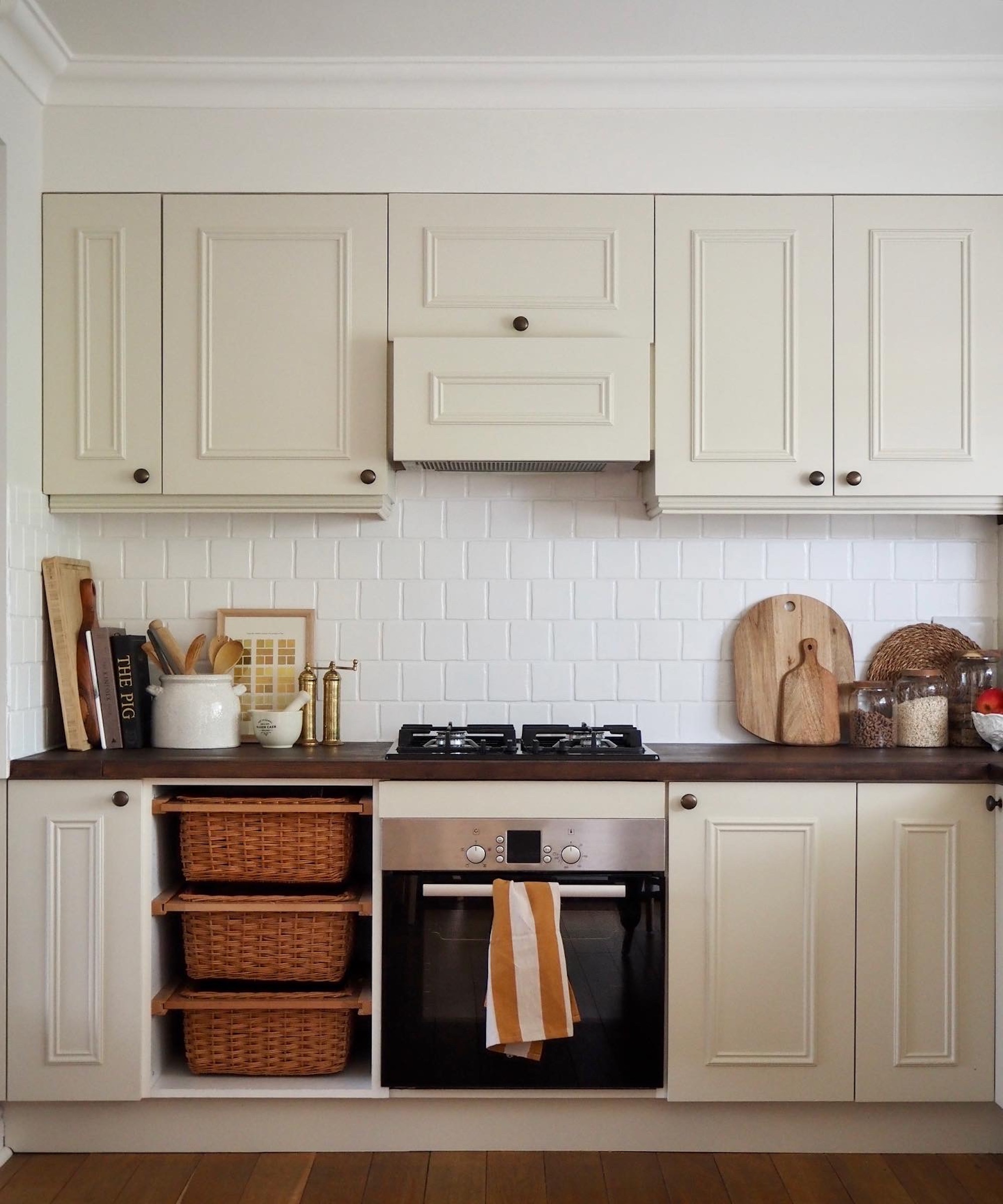
Helen Parker, Creative Director of deVOL Kitchens says, “The golden rule in all aspects of your home, especially with kitchens, is to buy the best you can afford and check their efficiency and quality before you rush into buying them cheaply and quickly."
Quality is absolutely essential for a kitchen that not only looks good but works like a dream. You want to make sure you're getting cupboards that can handle the heat of daily life and still look fabulous doing it.
That means doing your homework on brands known for their durability and craftsmanship. Think solid wood or high-grade plywood. With these materials, you're not just investing in cupboards; you're investing in the heart and soul of your kitchen.
9. Forgetting design cohesion out of room
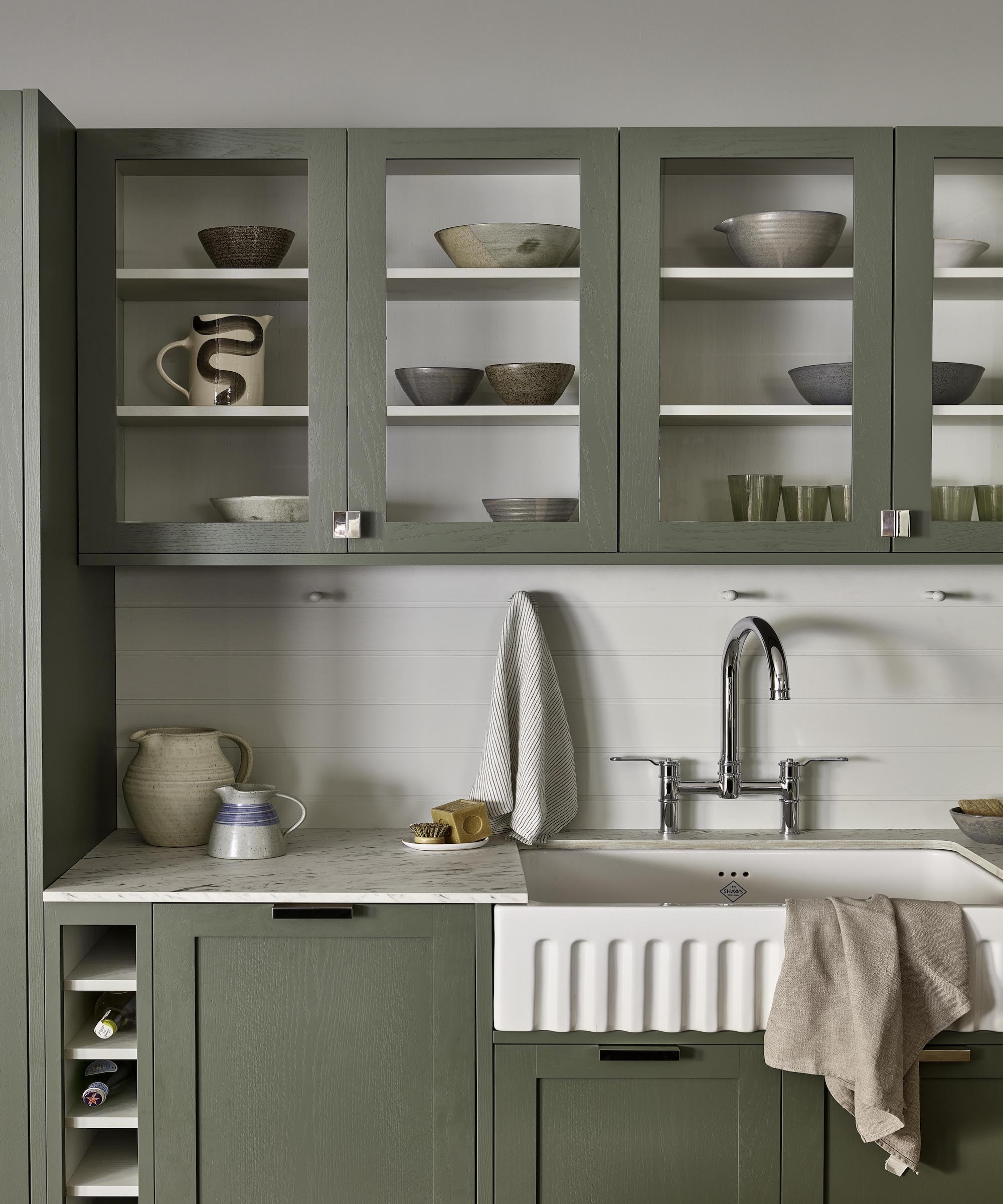
A common kitchen cabinet design mistake is opting for a color or style that is at complete odds with the rest of your kitchen or home design.
For instance, if your home is a tranquil haven with neutral tones, opting for brightly colored cabinets might disrupt the serene atmosphere. It's all about ensuring that every element, from cabinets to counter tops, works in harmony to create a unified and inviting environment.
Achieving a balanced design that melds with your home's personality is key.
Striving for cohesion rather than extremes is the secret sauce for crafting a harmonious kitchen space. While there's no need for a strict match between house style and kitchen design, selecting cabinets that align with your home's overall aesthetic fosters a seamless ambiance.
10. Failing to work around existing appliances
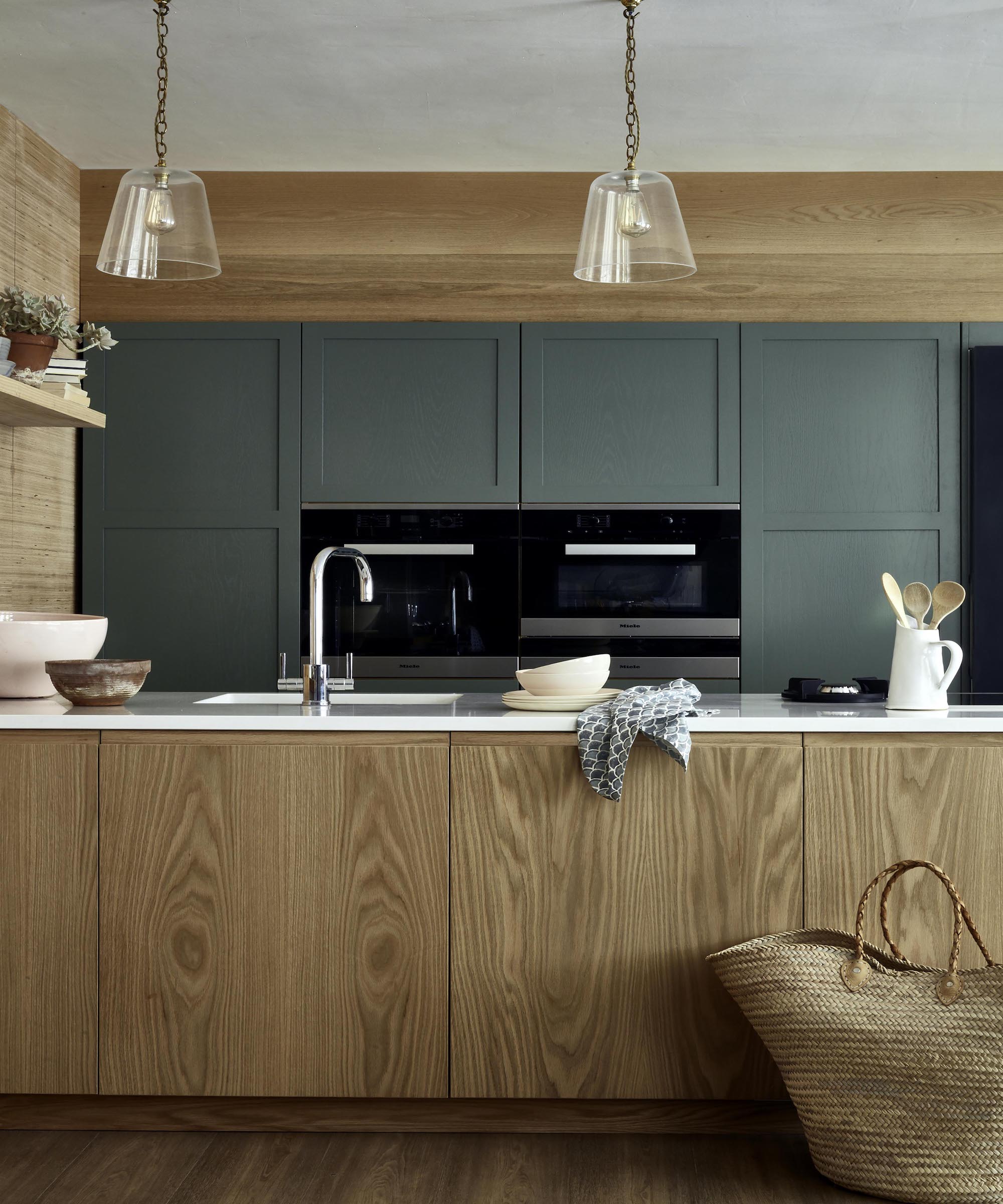
Making sure your cabinet layout accommodates those best kitchen appliances you won't be getting rid of is an absolute must for keeping things running smoothly and using your budget wisely. You don't want to end up with awkward gaps or limited access to your fridge or dishwasher.
Skipping this step can lead to major headaches later on, not to mention some serious wallet strain if you have to redo everything. By factoring in your appliances right from the start, you'll maximize your space and workflow like a pro.
No more trying to force that oversize microwave into a too-small cabinet or realizing your dream oven doesn't quite fit the space you had in mind. With a little foresight, you'll create a kitchen layout that's as practical as it is stylish — now that's what we call a recipe for success!
FAQs
What are the hardest kitchen cabinet mistakes to rectify once installed?
A lack of space around appliances and cabinets, as well forgetting plumbing needs are some of the hardest mistakes to fix. It is much easier to get these right from the beginning than to correct them later, so careful planning is essential.
How do I measure kitchen cabinets accurately?
Draw a rough birds eye view of your kitchen to mark overall space measurements, then individually measure the height and width of all cabinet doors, noting where you have a door of what dimension and marking those down too.
Double-check the dimensions, as some doors may appear similar but have slight differences. For the most accurate measurements, consider investing in a laser measuring device, such as the Laser Measure RockSeed 165 Feet Digital Laser Distance Meter on Amazon, which has been given an average of 4.5 stars by over 23,000 customers.
Investing time and effort in meticulous planning before your kitchen renovation pays off in the long run. Double-checking measurements and considering every detail helps sidestep costly mistakes. By avoiding these common blunders, you'll ensure your kitchen cabinets stand the test of time, bringing joy for years to come.
Next, delve into kitchen color ideas, and two-tone kitchen inspiration that might just revive your kitchen cabinet redesign.







